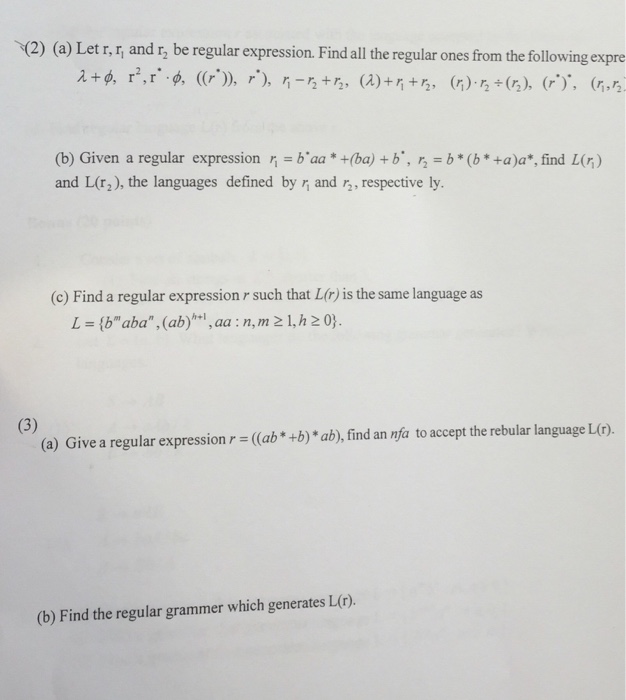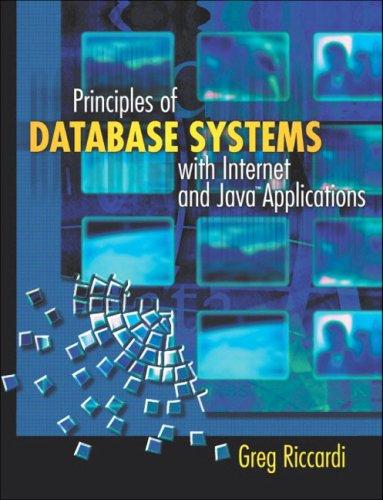Answered step by step
Verified Expert Solution
Question
1 Approved Answer
Computer theory (a) Let r, r_1, and r_2 be regular expression. Find all the regular ones from the following lambda + phi, r^2, r^*, phi,
Computer theory 
(a) Let r, r_1, and r_2 be regular expression. Find all the regular ones from the following lambda + phi, r^2, r^*, phi, ((r^*)), r^*), r_1 - r_2 + r_2, (lambda) + r_1 + r_2, (r_1) middot r_2 (r_2), (r^*)^*, (r_1, r_2) (b) Given a regular expression r_1 = b^* aa* + (ba) + b^*, r_2 = b* (b* + a) a*, find L(r_1) and L(r_2), the languages defined by r_1 and r_2, respectively. (c) Find a regular expression r such that L(r) is the same language as L = {b^m aba^n, (ab)^h + 1, aa: n, m greaterthanorequalto 1, h greaterthanorequalto 0}. (a) Give a regular expression r = ((ab * + b)* ab), find an nfa to accept the regular language L(r). (b) Find the regular grammer which generates L(r) 
Step by Step Solution
There are 3 Steps involved in it
Step: 1

Get Instant Access to Expert-Tailored Solutions
See step-by-step solutions with expert insights and AI powered tools for academic success
Step: 2

Step: 3

Ace Your Homework with AI
Get the answers you need in no time with our AI-driven, step-by-step assistance
Get Started


